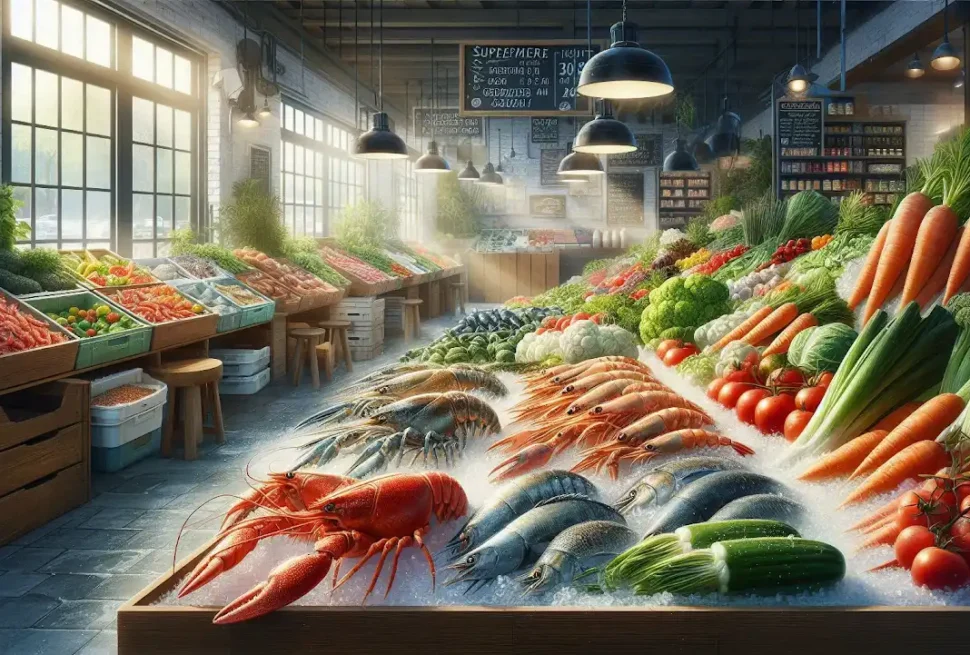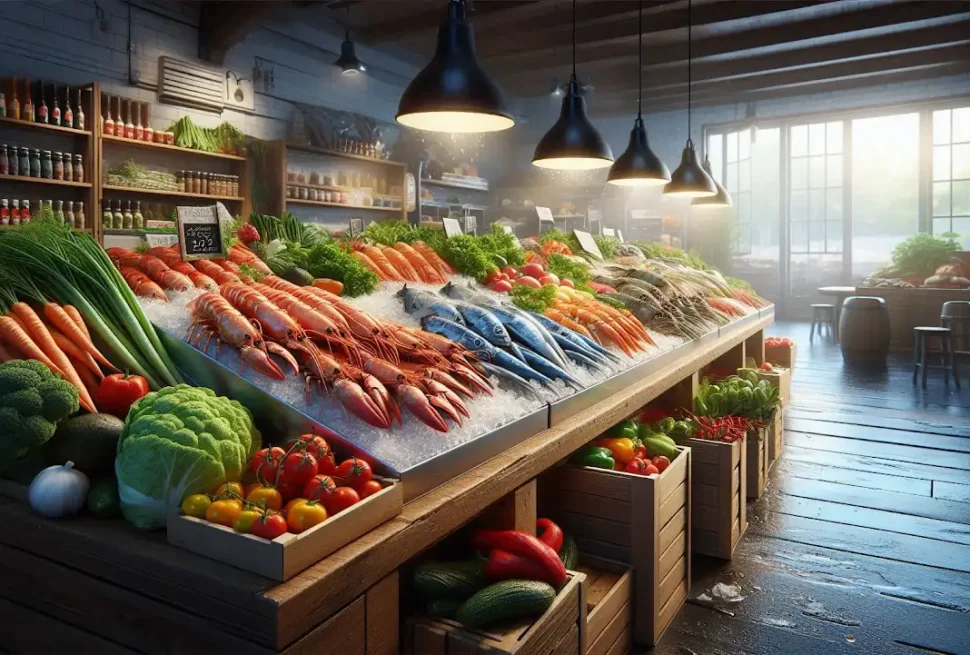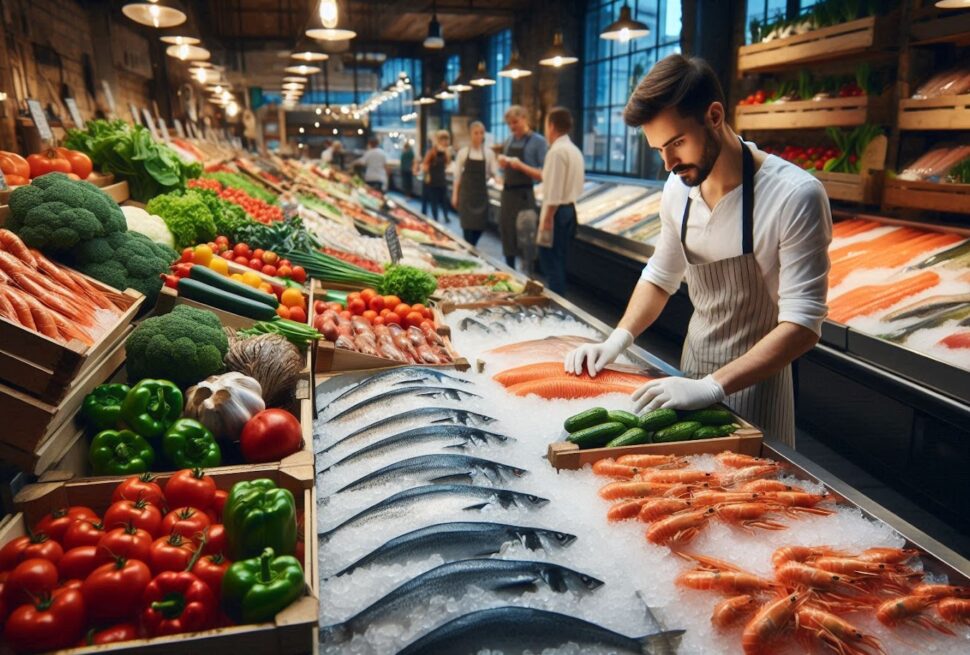Maritime Heritage Meets Modern Luxury: Dubai Marina’s Culinary Scene
The Dubai Marina district stands as a testament to architectural brilliance, where 7.6 kilometers of waterfront property seamlessly blend with contemporary living spaces. Home to over 120,000 residents, this maritime marvel hosts Dubai’s largest concentration of seafood establishments, with 42 dedicated restaurants specializing in ocean-to-table dining experiences. The district’s transformation from a simple fishing harbor in the 1990s to today’s ultra-luxury destination mirrors Dubai’s meteoric rise in the global culinary landscape.
The community’s crown jewel, the Marina Walk, spans 3.5 kilometers and features 23 waterfront dining venues, accounting for nearly 60% of the area’s premium seafood restaurants. These establishments collectively serve more than 8,000 daily visitors, sourcing approximately 2.4 tons of fresh seafood from local fishermen and international suppliers. The proximity to the Arabian Gulf ensures that morning catches arrive at restaurant kitchens within hours, maintaining exceptional quality standards that rival global seafood destinations.
Recent developments have introduced innovative dining concepts, including Dubai’s first floating seafood market in 2023, attracting an average of 1,200 visitors daily. The market operates from traditional wooden dhows, allowing residents to select fresh catches directly from local fishermen, maintaining a centuries-old trading tradition in a modern setting. This unique experience has contributed to a 35% increase in waterfront property values over the past five years.
The marina’s residential towers incorporate dedicated fish-cleaning stations and specialized kitchen ventilation systems, acknowledging the community’s passion for seafood preparation. These thoughtful amenities, combined with strict waste management protocols, have earned the district multiple environmental sustainability awards, including the 2024 Green Community Excellence Award for responsible seafood consumption practices.
Palm Jumeirah: Where Ocean Views Meet Culinary Excellence
The Palm Jumeirah, an engineering marvel visible from space, encompasses 17 fronds hosting 2,500 exclusive waterfront villas and 6,000 luxury apartments. Each frond features designated fishing zones and private beaches, where residents can engage in recreational fishing activities under carefully monitored sustainability guidelines. The community’s strategic design ensures that 87% of properties maintain direct water access, creating an unprecedented connection between residents and the Arabian Gulf.
The iconic destination houses 31 specialty seafood restaurants, including eight Michelin-starred establishments that have revolutionized Dubai’s fine dining scene. These culinary venues collectively employ 142 internationally acclaimed chefs specializing in various seafood preparations, from traditional Emirati methods to contemporary fusion techniques. The restaurants serve an estimated 15,000 covers weekly, with 65% of patrons being residents of the Palm Jumeirah community.
The Palm’s exclusive fish market, located at the Golden Mile Galleria, processes over 1.8 tons of fresh seafood daily, supplied by a network of 35 licensed local fishing vessels. The market’s transparent sourcing policy ensures that 80% of available seafood comes from sustainable fishing practices, with full traceability from catch to counter. This commitment to sustainability has resulted in a 45% reduction in the community’s seafood-related carbon footprint since 2020.
The community’s annual Seafood Festival, launched in 2022, attracts over 50,000 visitors during its ten-day run, generating approximately AED 15 million in revenue for local businesses. The festival showcases 75 different species of local fish and shellfish, educating residents about the region’s marine biodiversity while promoting sustainable consumption practices through interactive workshops and culinary demonstrations.
Jumeirah Beach Residence: The Epicenter of Coastal Gastronomy
Jumeirah Beach Residence (JBR) stretches across 1.7 kilometers of pristine coastline, featuring 40 residential towers that house 15,000 residents in a vibrant beachfront setting. The community’s dedicated dining promenade, The Walk, hosts 28 seafood-focused establishments, serving an average of 12,000 meals daily during peak season. These restaurants collectively maintain partnerships with 15 local fishing cooperatives, ensuring a steady supply of fresh catches throughout the year.
The district’s unique positioning has facilitated the development of Dubai’s first integrated seafood lifestyle hub, encompassing 4,500 square meters of retail and dining space. Launched in late 2023, this development includes specialized cooking schools, artisanal fish smoking facilities, and boutique seafood markets. The hub generates annual revenues exceeding AED 120 million, contributing significantly to Dubai’s growing reputation as a global seafood destination.
Educational initiatives within JBR have gained international recognition, with the community’s Marine Culinary Academy training over 300 chefs annually in sustainable seafood preparation techniques. The academy’s programs focus on utilizing 100% of each fish, resulting in a 40% reduction in seafood waste across participating restaurants. This innovative approach has attracted culinary students from 25 countries, establishing JBR as a center for sustainable seafood education.
The beachfront community has pioneered several environmental initiatives, including the installation of artificial reefs along its coastline, supporting local marine ecosystems and sustainable fishing practices. These conservation efforts have led to a 30% increase in local fish populations since 2021, directly benefiting both recreational anglers and commercial fishing operations that supply the community’s restaurants.
Bluewaters Island: An Emerging Haven for Seafood Connoisseurs
Bluewaters Island, Dubai’s newest maritime community, spans 500,000 square meters of reclaimed land and represents an investment of AED 6 billion in waterfront development. Since its inauguration in 2018, the island has attracted 47 food and beverage outlets, with 15 exclusively dedicated to seafood cuisine. The carefully curated mix of restaurants represents culinary traditions from 12 different maritime cultures, creating a unique fusion of global seafood preparations.
The island’s innovative “Sea-to-Plate” program connects residents directly with 25 registered fishing boats through a digital platform, allowing them to pre-order fresh catches before vessels return to port. This system handles approximately 800 kilograms of seafood daily, with 90% of orders fulfilled within four hours of catching. The program has revolutionized traditional supply chains, reducing food miles by 60% compared to conventional distribution methods.
Bluewaters has established Dubai’s first maritime heritage center, documenting the evolution of local fishing practices through interactive exhibits and virtual reality experiences. The 2,000-square-meter facility attracts 3,000 visitors weekly and houses a collection of traditional fishing equipment, historical photographs, and multimedia installations. The center’s research department actively collaborates with marine biologists to study sustainable fishing practices in the Arabian Gulf.
The community’s waterfront spaces incorporate dedicated zones for personal fishing, with 12 designated spots equipped with specialized cleaning stations and waste management facilities. These areas serve an average of 200 recreational anglers daily, operating under strict sustainability guidelines that protect local marine populations. The initiative has fostered a strong sense of environmental stewardship among residents, with 75% actively participating in marine conservation programs.
Port De La Mer: Riviera Living Meets Seafood Excellence
Port De La Mer introduces Mediterranean-inspired coastal living to Dubai, featuring 1,500 premium residences across 9 low-rise buildings. The development’s unique layout ensures that 92% of units offer unobstructed water views, while its private marina accommodates 192 berths for vessels up to 40 meters in length. The community’s waterfront promenade spans 2.5 kilometers, hosting 14 gourmet seafood establishments that blend Mediterranean and Arabian culinary traditions.
The port’s signature feature, La Mer Fish Market, operates as a modern interpretation of traditional Mediterranean fish markets, handling 1.2 tons of fresh seafood daily. The market’s innovative design includes temperature-controlled display cases, live tanks for shellfish, and a transparent auction system that connects buyers directly with fishing vessels. This facility serves both residents and Dubai’s top restaurants, processing over 45 species of fish and shellfish daily.
Environmental sustainability stands at the core of Port De La Mer’s operations, with the community achieving carbon neutrality in its seafood supply chain through innovative logistics and waste management systems. Solar-powered refrigeration units maintain optimal storage temperatures while reducing energy consumption by 40% compared to conventional systems. The community’s commitment to sustainability extends to its fishing guidelines, which protect spawning grounds and enforce seasonal restrictions on vulnerable species.
The development’s culinary education programs have trained 180 local chefs in sustainable seafood preparation techniques since 2022, focusing on traditional preservation methods and zero-waste cooking practices. These initiatives have reduced food waste by 55% across the community’s restaurants while increasing customer satisfaction scores by 28%. The success of these programs has led to their adoption by other waterfront communities across Dubai.
Creek Harbour: Where Traditional Fishing Heritage Embraces Modern Luxury
Dubai Creek Harbour represents the city’s most ambitious waterfront development, covering 6 square kilometers of prime real estate along the historic Dubai Creek. The community honors its fishing heritage through thoughtful design elements, including 3.5 kilometers of fishing pontoons and 28 traditional dhow berths that continue to supply fresh seafood to local markets. These facilities support 45 registered fishing families who collectively land 2.8 tons of seafood daily.
The development’s central attraction, the Creek Marina, spans 81,000 square meters and features 19 seafood-focused restaurants and cafes. These establishments range from traditional fish shacks serving local specialties to high-end dining venues offering contemporary interpretations of classic seafood dishes. The marina’s restaurants collectively serve over 9,000 customers weekly, with 70% of their seafood sourced from local waters within a 50-kilometer radius.
Creek Harbour’s Fish Market Academy offers professional certification programs in seafood handling, preparation, and sustainable fishing practices. Since its establishment in 2023, the academy has certified 250 professionals, contributing to Dubai’s growing reputation as a center for culinary excellence. The facility’s research department collaborates with international marine conservation organizations to develop best practices for sustainable fishing in tropical waters.
The community’s innovative “Smart Fishing” initiative employs artificial intelligence and drone technology to monitor local fish populations and guide sustainable harvesting practices. This system has improved catch efficiency by 35% while reducing the environmental impact of fishing activities. The program’s success has attracted interest from marine conservation experts worldwide, establishing Creek Harbour as a model for sustainable urban fishing communities.
Essential Elements of Dubai’s Premier Waterfront Communities:
- Direct water access with dedicated fishing zones and private beaches
- State-of-the-art seafood storage and preparation facilities
- Sustainable fishing practices and environmental conservation programs
- Professional culinary education and training facilities
- Traditional markets complemented by modern dining establishments
- Smart technology integration for monitoring and conservation
- Cultural preservation through maritime heritage centers
- Community engagement in marine conservation efforts




